General
Transport
People
Accomodation
Food & Drink
Sightseeing
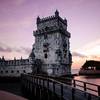 What to see in Germany?
What to see in Germany?
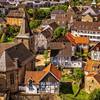 What smaller scenic towns in Germany to visit?
What smaller scenic towns in Germany to visit?
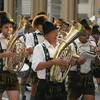 Are there any festivals in Germany?
Are there any festivals in Germany?
 What are the best tours to take in Germany?
What are the best tours to take in Germany?
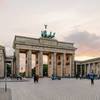 Is Berlin city card worth buying?
Is Berlin city card worth buying?
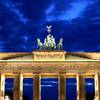 What to do in Berlin on a budget?
What to do in Berlin on a budget?
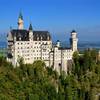 How do I get to Neuschwanstein Castle from Munich?
How do I get to Neuschwanstein Castle from Munich?
Legal
Money
Safety & Health
Family travel
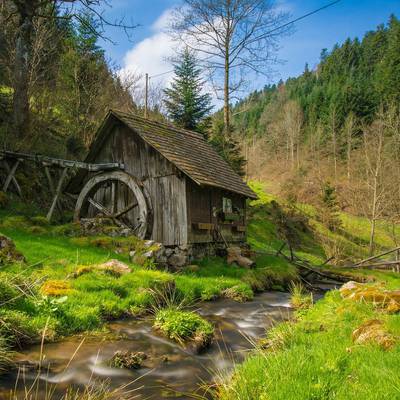
What to do in Germany?
Lovely old cathedrals and grand palaces are everywhere, and in the smaller towns and villages –some with their original medieval Old Towns still intact – many centuries-old traditions, including traditional Christmas markets, festivals, and fairs, continue to this day. At the cultural heart of Germany is the capital, Berlin, home to many fine museums and galleries, while nature lovers will find a world of possibilities in Germany's great outdoors. For ideas to help plan your travels, read this list of things to do in Germany.
Discover The Black Forest. The beautiful Black Forest with its dark, densely-wooded hills is one of the most visited upland regions in all of Europe. Situated in the southwestern corner of Germany and extending 160 kilometers from Pforzheim in the north to Waldshut on the High Rhine in the south, it's a hiker's heaven. On the west side, it descends steeply to the Rhine, crossed by lush valleys, while in the east, it slopes more gently down to the upper Neckar and Danube valleys. Popular spots include Germany's oldest ski area at Todtnau, the magnificent spa facilities of Baden-Baden, and the attractive resort of Bad Liebenzell.
Hike Berchtesgaden National Park. This national park is an alpine heaven of lush forests, steep rock faces, crystal clear lakes, sleepy villages, and rolling meadows. It’s just you, the chirping of birds, and cows ringing their brass bells. Well-marked trails wind through the spectacular scenery, which brims with opportunities for hiking, and cycling.
Travel The Rhine Valley. The Rhine is not only Europe's most important waterway, its also the most beautiful. With a total length of 1,320 kilometers, this magnificent river stretches from Switzerland through Germany all the way to the Netherlands. While there are many places in Germany to enjoy this majestic river, the lovely Upper Middle Rhine Valley section – designated a UNESCO World heritage Site - is probably the most popular spot for tourists to visit. Here, this often dramatic 65-kilometer stretch of river boasts more than 40 castles and some 60 picturesque medieval towns all just waiting to be explored either by river cruise or by car.
Conquer the Zugspitze Massif. Part of the Wetterstein mountain range, the Zugspitze massif straddles the frontier between Germany and Austria and is surrounded by steep valleys. The eastern summit, at 2,962 meters, is crowned by a gilded cross and can be reached by the Bayerische Zugspitzbahn, a cog railway, or by cable car. Another great way to enjoy this area of outstanding natural beauty is aboard the Tiroler Zugspitzbahn, a railway that runs to the Zugspitzkamm station at 2,805 meters. From here, the journey can be continued via a cable car to Zugspitz-Westgipfel Station at 2,950 meters (be sure to sample a meal at the excellent panoramic restaurant located here).
Visit The Island of Rügen. Rügen is the largest and most beautiful of the German Baltic islands, separated from the rest of Germany by the Strelasund and linked to the mainland town of Stralsund by a causeway. The island's beauty stems from its diversity of landscape, including everything from flat farmland and forest-covered hills to expansive sandy beaches, lagoons, and lovely peninsulas. A fun thing to do here, especially for outdoor enthusiasts, is to pay a visit to the Jasmund Peninsula, which in places reaches heights of 161 meters. Here, you'll find Jasmund National Park, popular among nature lovers for its abundance of wildlife, with notable species found here, including rare white-tailed eagles. Another draw are the island's beautiful Stubnitz beech forests, part of Königsstuhl National Park. One of the most dramatic parts of the island's scenery can be enjoyed where these dense old forests come to a dramatic end on the Königsstuhl (King's Chair), a sheer chalk cliff plunges down to the sea from a height of 117 meters.
Swim the Königssee (King's Lake). The lovely Bavarian lake of Königssee is one of the great beauty spots of the region of Germany referred to as Berchtesgadener Land. Also known as the King's Lake, this area near Salzburg is a hiking (and biking) paradise thanks to its vast network of trails. One of the most popular things to do is follow the attractive footpath located along the east side of the Königssee to the Malerwinkel, or Painters' Corner, notable for its superb views over the lake and the surrounding mountains. Another equally attractive sightseeing option is taking a boat trip to the 17th-century Pilgrimage Chapel of St. Bartholomew, at the south end of the lake, and to walk from here to the Obersee. Berchtesgaden, at the end of the Deutsche Alpenstrasse, is perhaps the best-known tourist town and one of the most popular mountain resorts in the Bavarian Alps.
Sail to the Insel Mainau: The Flower Island of Lake Constance. Insel Mainau, the spectacular Flower Island on beautiful Lake Constance, covers an area of 110 acres and attracts many visitors to its beautiful parks and gardens, luxuriant with semitropical and tropical vegetation. Access to the island is by boat, or via a pedestrian bridge connecting it to the mainland, so be sure to allow a little extra travel time in addition to the two or more hours needed to properly explore this stunning property (ample public parking is available on the mainland, some with electric vehicle charging stations). Another highlight is the 18th-century Castle, notable for its lovely White Hall, the old defensive tower, and the gatehouse.
Have fun in the Europa-Park. Europa-Park, Germany's largest amusement park in Rust, recently unseated Neuschwanstein as the most visited site in Germany. It may not have the romance of the castle, but it does have mind-blowing rides, lands modeled on the different countries of Europe, and a mouse mascot that may remind you of someone else.
Stroll the Reeperbahn, the most famous street of Hamburg. This street gets its name from the old German word for ship’s rope, which was Reep, as the nearby area used to be produce ropes for Hamburg’s harbor. Today, the Reeperbahn is a vibrant nightlife street, offering a variety of clubs and entertainment, and bordering Hamburg’s red light district. The Beatles played an early show at the Reeperbahn’s Club Indra, and a Beatles Museum is now located in the area. If you’re looking for a night out in Hamburg, this is definitely the place to go.
Experience Berlin's night life. Berlin is the European party capital and the place of birth of the modern techno music. If you're staying in the city for more than a couple of days, make sure to drop by a club or a bar – luckily, there are plenty to choose from. Berlin's most famous partying spot is around Warschauer Straße with dozens of bars and clubs on its streets, so your best bet would be to head in that direction. However, remember, because of the district's nature, there might be a lot of drunk people on the street. Be mindful of your belongings and your whereabouts!

Is there a coffee and tea culture in Germany?
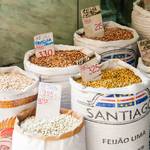
How much does the food cost?

Am I expected to tip in Germany?

How do I use ATMs in Germany?

Is Berlin city card worth buying?
